
SHAH ALAM: Adnan ACV costs. One of the PH MPs responsible for defence and national security sector – Johari Abdul (PKR-Sungai Petani) posed a a written question for the Defence Minister to outline the cost of procurement and maintenance of the Army’s Adnan ACV fleet. He also wanted to know how many units were initially purchased and how many are still running.
The answer (below, translated into English) was given on the Nov. 3.
The government has implemented the procurement of Armored Combat Vehicle, ACV 300 Adnan in stages involving 267 vehicles with a total cost of RM1.324 billion. All 267 of these vehicles are still in operation and the total cost for the maintenance of the vehicle since entering service to date it is worth RM122.2 million.
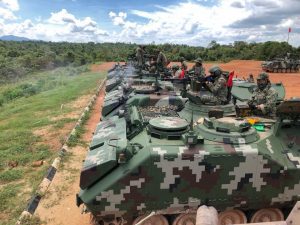
Of course we would have been given a better answer if the MP had asked for the total running cost of the Adnans since service, which includes fuel, maintenance, weapons and personnel, instead of just the procurement and maintenance ones. I admit the cost of personnel will be difficult to quantify as it may or may not include support personnel (from the brigade) though undoubtedly it will be the highest one but the rest is easy to obtain from the records. Why from the brigade then? Of course a battalion doesn’t work in isolation, it will have to work with other units for the best results.
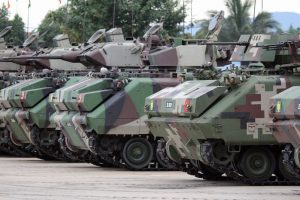
Anyhow I have no idea why the MP wants to know about the procurement and maintenance cost of the Adnans as it had already been in service for more than 20 years now. It would be more pertinent to know the total operating costs of the Gempitas in service (we already know the procurement costs).
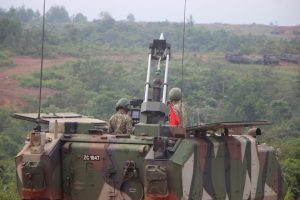
Perhaps the MP was intrigue by the Adnan upgrade project and the scandal in the supply of spare parts for the Adnan and Gempita.
–Malaysian Defence If you like this post, buy me an espresso. Paypal Payment


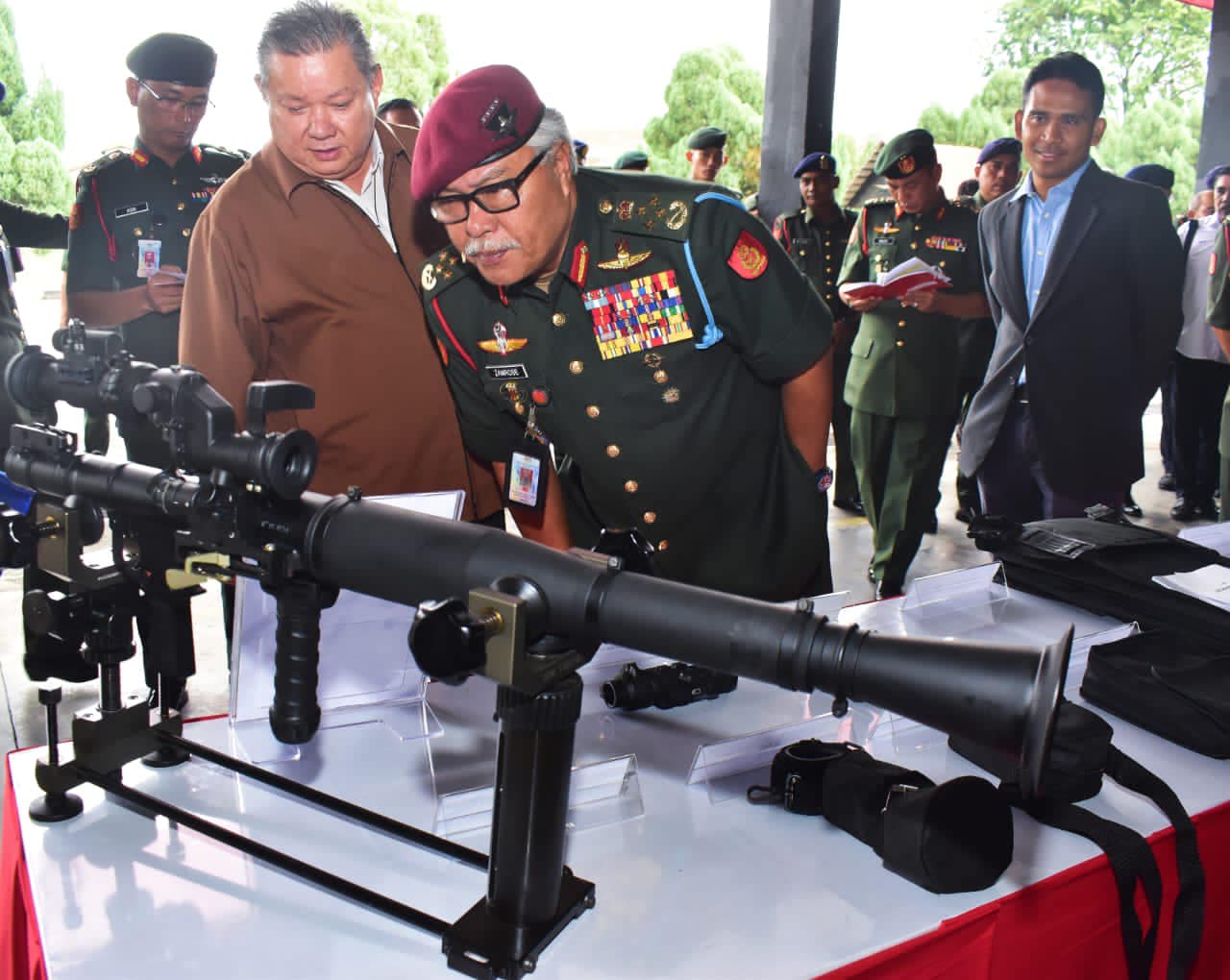
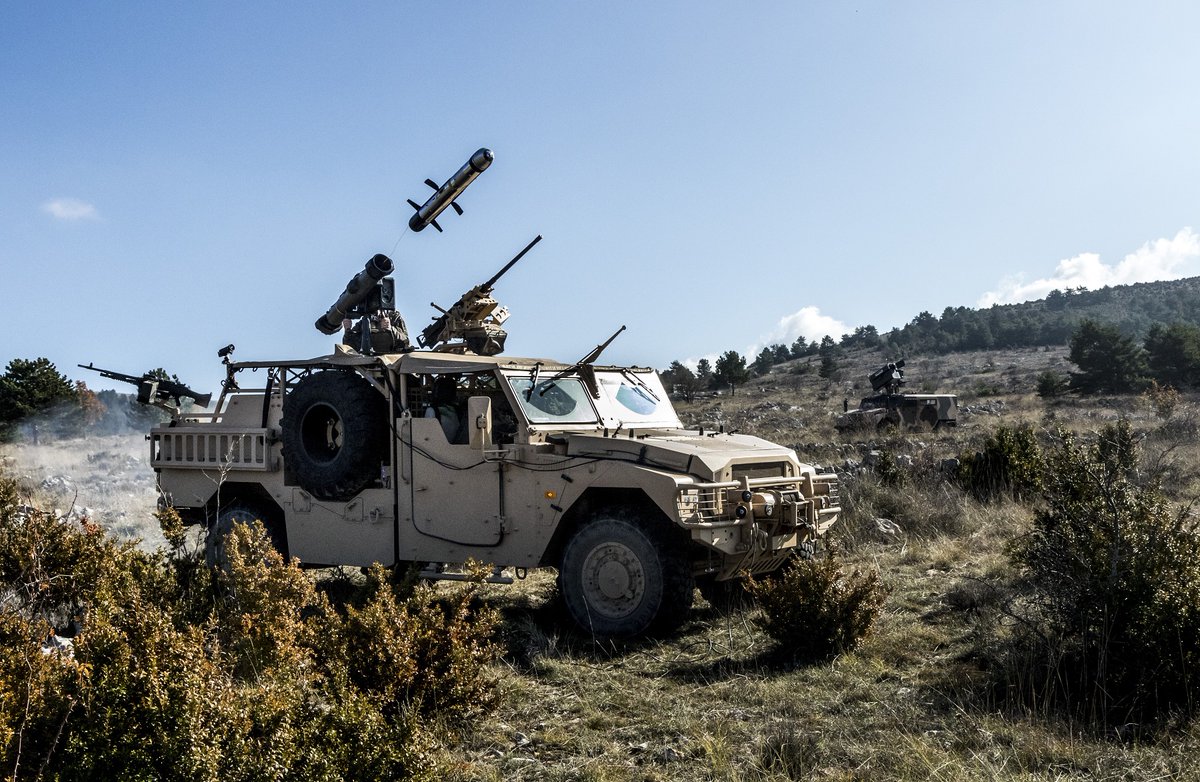
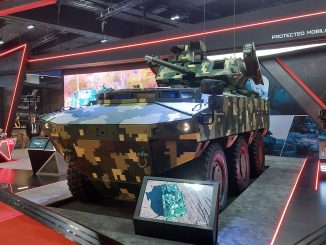
If it were altruistic, he should pose that question when they were in power.
If it were ultraistic, well… I guess it is pretty clear politicians, from both sides, are still nurturing their cro… entities of interests.
Anyways, the Adnans & MIFV, like the Condors, have plenty of use remaining and it would be wiser to SLEP and upgrade them, reengine with new powerpack & Diehl tracks.
There is no need to re engine the MIFV, its had been done in the last 10 years or so
Marhalim,
Was there a huge price difference between the K200 and the Adnan as both were bought in a different scenario, one in a rush to meet the UN needs and the other which was assembled here?
“like the Condors, have plenty of use remaining”
On paper a 60 odd year old Ferret has life left and could be refurbished. Whether the end user sees and need and whether it’s a soubd return of investment really depends.
Ed,
The KIFVs were an outright off the shelf buy. The Adnans invloved tech trabsfers, setting up local asembly facilities, etc, all resulting in extra costs. The Adnan was also fitted with various kit not available on the KIFVs.
@Marhalim
https://www.malaysiandefence.com/adnan-and-mifv-upgrade-in-rmk12/
Based on this article I was thinking the MIFV would be reengined to commonise with the Adnans. Sorry if I were mistaken.
“Whether the end user sees and need”
Depends on whether the end user will get new replacements or not. If the end user were forced to adapt and make do with these veteran workhorses, as there are a lot of them, the end user will invariably find creative & innovative ways to keep them running, much like how TLDM is forced to relife the PCs as no new assets are forthcoming soon. There are still plenty of uses for the Condors; border patrol & security, troop transport, PDRM & Civil Defence, etc
Basically each adnan costs RM5 million each.
MIFV we bought in 1993 for Bosnia mission costs RM1.5 million each. First batch of 42 was bought for RM63 million.
Lipanbara costs RM7 million each.
Adnan is much more advanced than the MIFV, with 25mm turrets, laser warning sensors, battlefield management systems (BMS), and some with soucy fully rubber tracks.
Lipanbara should not have cost RM7 million when Royal Thai Marines buy similar First Win for just RM2.1 million.
Now for the gempita. Is RM29.2 million for a gempita expensive? What does the price includes? It includes R&D, 30mm turrets, INGWE ATGM missiles, Vingtaqs II reconnaissance systems, NBC (Nuclear, Biological and Chemical) reconnaissance systems and much more. Why shouldn’t we fully utilise the R&D sunk costs for the gempita and just buy more of them instead? How does the cost compare with contemporary 8×8 IFV? British army contract for 500 Boxers is for 28 billion pounds. That is about RM31.8 million each.
Azlan,
Good to know.
Were they planning to add more Adnan after the 267 units since we got the tech knowledge? Looking at the money spent on tech transfer and logistic set-up for the Kedah, Gempita and maybe Samudera as well, follow up build look slim.
You’ve overlooked the point I was making. It has nothing to do with the fact that the Condor still has life in it and can perform a variety of roles – plainly obvious to anyone.
It boils down to what the end user decides. In this regards; after examining several factors; including the need to conserve cash for other things and looking at how sound a long term return of investment upgraded Condors would provide; the Army decided not to proceed with a Condor upgrade …. Same with the Scorpions and Stormers. it’s not about ”creative & innovative ways” as you put it but the end user deciding on a certain option after looking at things in totality and weighing various options …. As for the end user ‘being forced’; the issue of ”being forced’ by politicians often backfires with negative consequences for the taxpayer and end user which would be obvious to even those with a cursory interest in the MAF.
Same reason the RMAF decided to retire the Fulcrums rather than up upgrading them; wasn’t a cost effective means of utilising cash resources in the long term. You mentioned the RMNs ‘PCS’. Different scenario; if you really think about it. The RMN has no other extra hulls and has a higher ops tempo than the army. After retiring the Condors the army still has AV-8s; as well as other vehicles; different scenario which does not call for a direct comparison….
Gonggok – “”British army contract for 500 Boxers is for 28 billion pounds.”
Those are a diffrent type of vehicle. More contemporary, intended for sustained high intenisty ops. They are far far better protected [other armies take ptotection seriously] and networked [more than just a BMS].
Liew,
There was actually very little tech transfer although the term excites fan boys and bureacrats. We assembled them mostly from imported parts, nothing much more than that.
After years and years, Deftech did almost zero modifications or actual R&D, not even bar armour or chicken wire to protect against shoulder fired weapons.
Only reason we got Adnan is because the Turks knew we were suckers for local production and Turkey is Islamic. I knew an ex Armoured Corps guy who was in Deftech and did the evaluation.
It all boils down if the end user can still make a choice.
If you have the option of buying a brand new car, it is plainly obvious to anyone which would be your choice. But if your options is only 2nd hand car, and you have no hope of funding windfall for brand new one, it is plainly obvious to anyone which should be your choice. As long the Government pander to TDM request to buy new APCs while hundreds lay idle elsewhere, there is no incentive for them to be creative & innovative with what they have.
This unlike TLDM which were left with no choice, and therefore had to make something out of what they have on hand, even to rehulling a boat (which is basically a new ship in all but name). Different scenario, same conundrum, equal comparisons…
@gonggok
We have no more need for more 8X8. If the operational required something smaller, you can’t just use something bigger. Our Gempitas would cost a lot on the whole because of the number of variants in that fleet as compared to contemporaries in other services.
gempita/pars was one of the first of the contemporary 30ton+ 8×8 IFV/AFV.
Both the gempita and the boxer has a baseline armor of STANAG 4569 Level 4 all-around. Fitting out for maximum protection will increase the weight, affecting many things such as air portability, bridge weight, amphibious capability among others. Depends on what kind of tradeoffs each army wants, and what kind of terrain each army operates in.
Look also for the turret combinations. manned turrets are heavier than unmanned turrets. when we did the gempita, there was no 30mm unmanned turrets available anyway.
“Depends on what kind of tradeoffs each army wants”
Indeed, which is why I pointed out that Boxer is different. It’intended to be used in a far higher intensity scenario, in a far higher networked environment.
Exrra protection equals to more weight and if a vehicle can’t survive it can’t do its job. The trend now is IFVs getting heavier and heavier because the battlefield is getting more and more dangerous. As for terrain, the key to sucessful armour emoloyment is adequate and effective engineering support.
The AV-8 is in line with our requirements, not being in a high intensity high tempo scenario, the problem is, even in low intensity scenarios, the danger is increasing. As it stands there is zero provision for the AV-8 to be fitted with chicken wire or bar armour.
gonggok – ”will increase the weight, affecting many things such as air portability, bridge weight, amphibious capability among others.”
I’m keenly aware of that but thank you. Ultimately you can have a light IFV that can be transported or cross a certain bridge but it has to survive to do its job and it is a key national assets which has to be protected as far as possible. y
If a multi million IFV can be easily destroyed by a shaped charge warhead costing a few thousand because the army didn’t want to spend a few thousand equipping it with bar armour or chicken wire; something is fundamentally wrong … If a MBT has ERAs which are intended to deal with chemical energy rounds rather than KE penetrators then something is also wrong …
gonggok – ”manned turrets are heavier than unmanned turrets.”
If current technology demonstrators and conceptual studies are anything to go by; manned turrets will be a thing of the past in the future. Companies have also come up with a the crew solely in the hull and with a full 360 degree view of the surrounding environment without a manned turret, periscopes or the need to look out of hatches.
”If you have the option of buying a brand new car, it is plainly obvious to anyone which would be your choice.;;
To you maybe but the army felt it could do away with the Condors because it had the AV-8 and limitations inherent with it Condor; as well as costs savings. It’s about making trade offs and deciding where to utilise resources.
”there is no incentive for them to be creative & innovative with what they have.”
Nonsense. Again – after thoroughly examining various factors; the army decided that the cash would be better utilised elsewhere and that upgrading them wasn’t a sound long term ROI. Same reason the Scorpions and Stormers were retired… Same reason the RMAF retired the Fulcrums and Nuris. You mentioned the RMN; a major difference is that the RMN absolutely needed the hulls provided by the FACs. It also operates at a higher tempo and a more challenging environment compared to the army. The army was in a position to do away with the Condorl the RMN was not with the FACs.
BTW it wasn’t only the army which wasn’t keen. MINDEF and MOF also wasn’t happy about the prices quoted; plus upgrades do not change the fact that the Condor still has mobility and protection limitations.
I appreciate the above conversations. My concern is, why in the world does that politician did not ask about Gempita and the future 6×6 procurement? Surely that would be more useful compared to just asking about the Adnans which is going be with us for a few more years.
Based on 2019 report, he Army will be upgrading the Adnan this RMK (RMK12) that politician should have asked what kind of upgrades the Army is considering and the expected cost of such upgrades and expected future maintenance of the Adnans as well. urghhh politicians will always be politicians…..
gonggok – ”Now for the gempita. Is RM29.2 million for a gempita expensive? What does the price includes?”
If we had bought them off the shelf and had them fitted out as we wished in Turkey how much would it have cost? That is the question we really should be asking if we want to talk about prices and whther it was ”expensive”..
Secondly; we also have to ask ourselves whether setting up a local assembly; tech transfers; IP rights, etc, will in the long run be a good use of taxpayers money in the form of actual tangible results?
Should we buy more? Yes but only if the army actually has an operational requirement. The very last thing which should happen is the needs of Deftech taking precedence over the army and the taxpayer. On local assembly and all the costs it entails; without actually determining how many the government was willing to fund over a given number of years beyond the initial batch; we committed to the whole exercise. Such is the way we do things …
Ed Liew – ”Looking at the money spent on tech transfer and logistic set-up for the Kedah, Gempita and maybe Samudera as well, follow up build look slim.”
We do not have consistency because we engage in PR driven on the surface looking sound undertakings but in reality are a colossal waste. Because of the dismal amount we allocate to defence and us not utilsing the cash optimally; we are perpetually short of cash and the MAF’s wish list keep getting longer; thus we keep switching priorities and buy a bit but never enough of everything. Back when the MRCA programme was on Dassault offered us the option of local assembly because it knew we were suckers for ”local assembly” and ”tech transfers”; yet as anyone would know; setting up a local assembly for a mere 18 airframes is a huge money down the drain undertaking.
Luqman – ” My concern is, why in the world does that politician did not ask about Gempita and the future 6×6 procurement?”
To me the pertinent/interesting questions are why did he ask about it in the first; what/who made him ask it and what was the answer he was expecting?
Luqman – ”politician should have asked what kind of upgrades the Army is considering ”
Yes but you really think he bothers? Also it is it a ”refurbishment” to replace time expired no longer supportable stuff or an ”upgrade” per see?
@gonggok
The AV8 was revolutionary being one of the first true all wheeled IFV. The Boxer however is about half a generation ahead of AV8 being designed onset to have Stanag Level4 protection, there is still room for growth. The AV8s otoh were basically uparmoured PARS 2, so any growth is limited. Most physical addon protection (ie bars or chicken wires) are done temporarily by 1st rate armies in view that the permanent solution would be APS. Indeed there are no guarantees of total protection with the top & bottom still vulnerable, or else we might as well get Namer heavy IFVs.
Regardless, the level of protection is really dependent on the operational tactical usage of these IFVs, whether as mounts for troops to fight from (as with Namer) or as fire support to dismounted troops whom would better deal with shoulder armed adversaries. Extra protection is welcomed but if it affects the operational capability of the vehicle & crew, then it becomes a burden rather than help.
– Boxer may have a comparable baseline protection level to the Pars but it was always also intended to be uparmoured.
– It’s a cliche to say no AFV is invulnerable but they have to be protected as far as possible, as they are key national assets. It’s also a fact that “heavy” vehicles can go almost eveywhere as long as engineering support is there. There’s a reason why AFVs are getting heavier, for the simple reason that the battlefield is getting increasingly dangerous.
– Chicken wire, slate, bar armour are mainly for use in restricted terain where engagement ranges will be shorter and from attacks will be from various angles [as shoew in Chechnya and Syria].APSs are intended to deal mainly with top attack munitions unlike chicken wire/bar and slate armour which are not in any way intended to be “temporary” – both complement each other. Also note that dismounted infantry can only do so much to ptotect their vehicle as they also have other things to do and in unrestricted terrain the vehicle will mostly be in support of the ibfantry, unlike in restricted terrain.
“else we might as well get Namer heavy IFVs”
The concept of heavyweight IFVs has not caught on outside Israel for the reason that Namer and Ahzarit were built specific to Israeli requirements, i.e. hardly any bridges or rivers to cross, no need to be airflown and the short distances IFVs have to travel to get to the Golan Heights,Sinai,Gaza and West Bank.
azlan
your want for maximum armor = israeli requirements.
you cannot get AFV that can cross rivers and bridges, airflown and still can take hits from shaped charge anti tank rounds like you want.
The gempita can be uparmoured to higher standards than it is now. but its weight, its width will be much more. What it is right now probably the best specced IFV/AFV that could fulfil Tentera Darat requirements, with the tradeoffs because of those requirements. If say Tentera Darat wanted armor similar to what Australian Army wants for its boxer, it could be done with the gempita, but mobility, swim capabiity, etc. will suffer. It would be basically be the PARS as specified by Oman.
gonggok – “your want for maximum armor = israeli requirements”
Incorrect … As I clearly stated the Israelis have a particular set of operational circumstances which enable them to do what they do.
As I have clearly stated I want AFVs to be as upamoured as far as possible but depending on requirements and circumstances.
I’m well aware that everything is a trade off between mobility, protection and firepower but thank you..
Also, no point achieving mobility and accesibility if your AFV can’t survive to do its job . …
BTW, Aussie AFVs will be operating in Asia should conflict arise and they still can despite being heavier..
“probably the best specced IFV/AFV that could fulfil Tentera Darat requirements”
Incorrect. It’s based on our threat perceptions. The assumption that we will not face a serious threat – fantasy assumption.
Adding chicken wire/bar/cage armour has minimal affect on weight and width and it can make the key diffrence between surviving or not .. It’s not as if I’m advocating extra space or applique armour weighting 5 tonnes extra. In my previous posts I have clearly laid out what I meant and my reasoning and I”m very aware of the trade offs in protection, mobility and firepower ….
I never advocated we take the Israeli approach which is only applicable for Israel due to factors I’ve mentioned…
P.S.
Our primary operating areas will be in urban areas and in palm oil estates and such. Areas in which an extra couple of tonnes of extra weight due to chicken wire or bar/cage armour will not make any diffrence on the ability of AFVs to effectively operate. Note that unlike in the past the rapid urbanisation of the country has led to better roads and bridges/overpasess with an increased weight capacity. In short the landscape has changed.
We will never be in a position to equip every vehicle with a APS but the very least we can do is to equip them with the means to negate the effects of shaped charge warheads.
Lest anyone forget,we lost a V-100/50 to a RPG 2 and 4 Condors to RPG 7s [people lost their lives and national assets were lost], yet decades later we have so called new generation IFVs that are just as vulnerable as their predesessors from decades before.
Something is fundamentally wrong when a high tech IFV costing millions has zero protection against a shaped charge round costing a few thousand. The idea that we can’t do anything about it because of weight and width concerns, which are minimal anyway, is poppycock. It’s not as if we need a 55 tonne IFV….